Fujifilm is known for its stylish products, Kaizen firmware ethos and innovative boundary pushing. This approach sees its products in many best camera round-ups, and its out-of-the-box combined with retro considerations has never been more apparent than with the X-Pro3. This is a camera that has courted controversy thanks to its hidden three-inch LCD touchscreen, included due to professional feedback that’s been translated as an anti-chimping mechanism. So, can this X series model breathe new life into a more traditional way of shooting?
Note: This review was originally published in Practical Photography magazine. No opinions have been changed from the time of review.
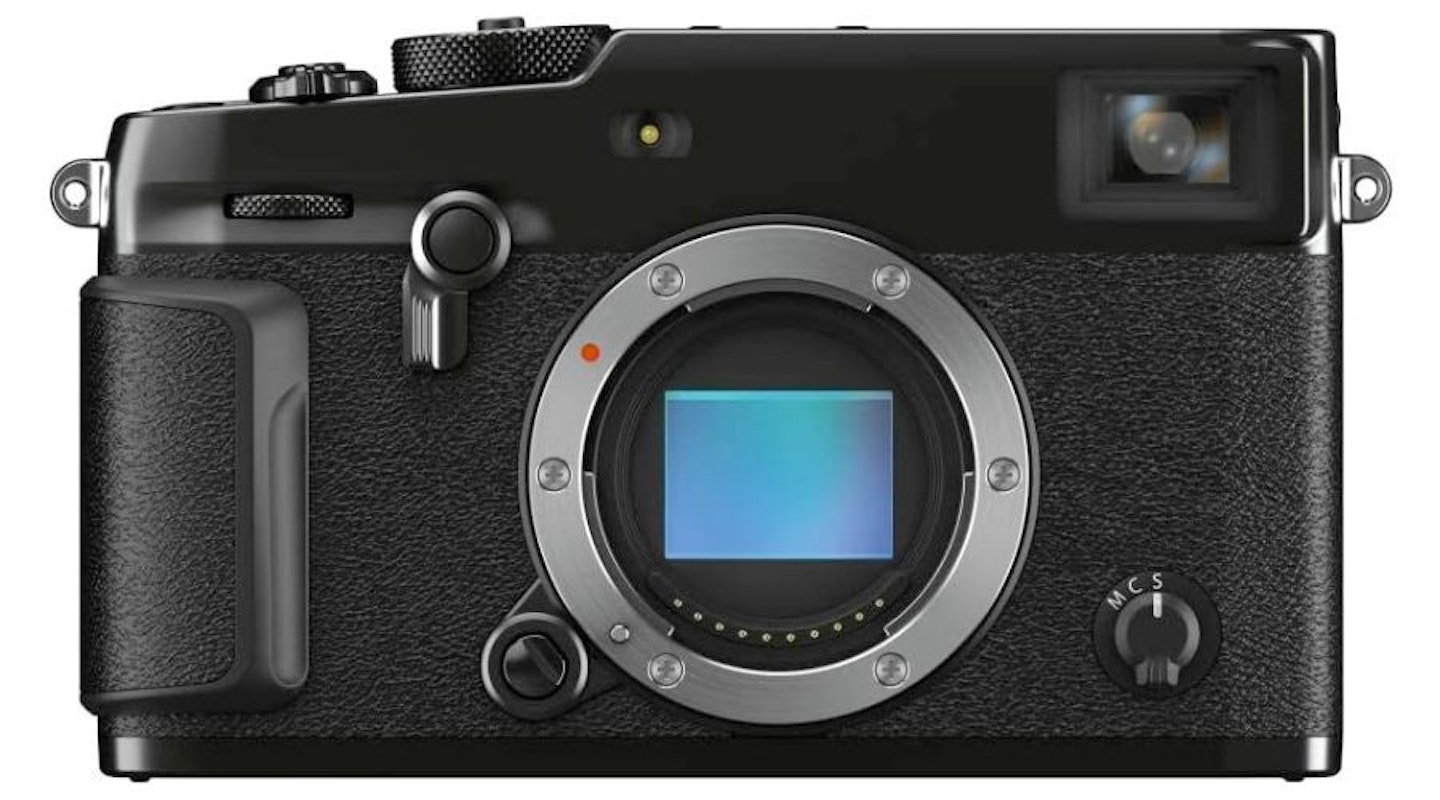 Fujifilm
Fujifilmwww.mpb.com
Note: Price varies depending on condition.
Pros
- Exceptional image quality
- Great colour reproduction
- Film Simulation modes
- Trusty AF system
- Good low-light performance
Cons
- Hidden screen will prove controversial for some
- Pricier than equivalent performance “normal” mirrorless cameras from Fujifilm
| Effective resolution | 26.1MP |
| Processor | X-Processor 4 |
| LCD | 3in 1620k-dot hidden tilting touchscreen |
| Shutter | Bulb, 15min – 1/8000sec mechanical, or 1/32,000sec electronic shutter |
| Autofocus | 425-point phase detection AF |
| ISO | 160-12,800 |
| Shooting speed and video | 11fps with mechanical for 42 RAWs, up to 30fps electronic Sports Finder mode for 35 RAWs, DCI 4K at 30fps |
| Other features | Fujifilm Film Simulation modes, Colour Chrome Effect Blue, Sports Finder, Grain Effect, Focus Bracketing, Exposure bracketing, Eye AF. Battery life: 370 shots |
| Card type | Dual SD, SDXC, SDHC UHS-I/UHS-II |
| Size and weight | 141x83x46mm, 497g |
Main features

Fujifilm has included the X-Trans 4 sensor as well as the X-Processor 4, that puts it on par with the X-T3. There are perks such as the solid 425-point phase detect AF system and nippy 11fps continuous shooting with the mechanical shutter, or 30fps with the electronic Sports Finder mode with 1.25x crop. The ISO ranges from 160-12,800 – lower than the previous ISO base of 200 – and the EVF has been redesigned to offer a higher resolution of 3690k dots on a slightly larger 0.5-inch OLED panel. It also has a faster 100fps refresh rate, and increased brightness and colour space.
Of course, being a hybrid viewfinder, the optical part has also received some love. It allows a wider 27-degree angle of view and a higher eye point than previous models.
• D is for design: Keeping true to the original X-Pro rangefinder design, the X-Pro3 looks every inch the classic, with the only major changes taking place on the rear of the camera.
• Glassware: While many will pair this with either the 23mm or 35mm f/2 Fujinon optics, which offer 35mm and 50mm equivalents, Fujifilm has a wide range of excellent lenses to choose from.
• Two-faced: The Hybrid viewfinder can be used as an EVF, or as an optical rangefinder with digital overlay. This popular feature also now offers an even wider 27-degree field-of-view.
• ISO speedy: The speed dial – a mainstay of Fujifilm cameras – allows you to set shutter speed. It also doubles as the ISO control.
• Two views: The Hybrid viewfinder can be used as an EVF or as a traditional optical rangefinder, albeit with a digital overlay. This is one of the most popular aspects of the XPro series, and now offers an even wider 17-degree field-of-view.
• Go minimal: The X-Pro3’s design follows in the footsteps of the X-T3 by removing the D-pad and shortcuts. There are now menu, quick menu and drive setting buttons for simple on-the-fly shooting and a handy joystick.
• Peekaboo: The three-inch 1620k-dot LCD is hidden, while a new 1.28-inch sub-monitor takes its place, and can display settings or the current Film Simulation mode. It has proved to be a talking point.
Handling and build
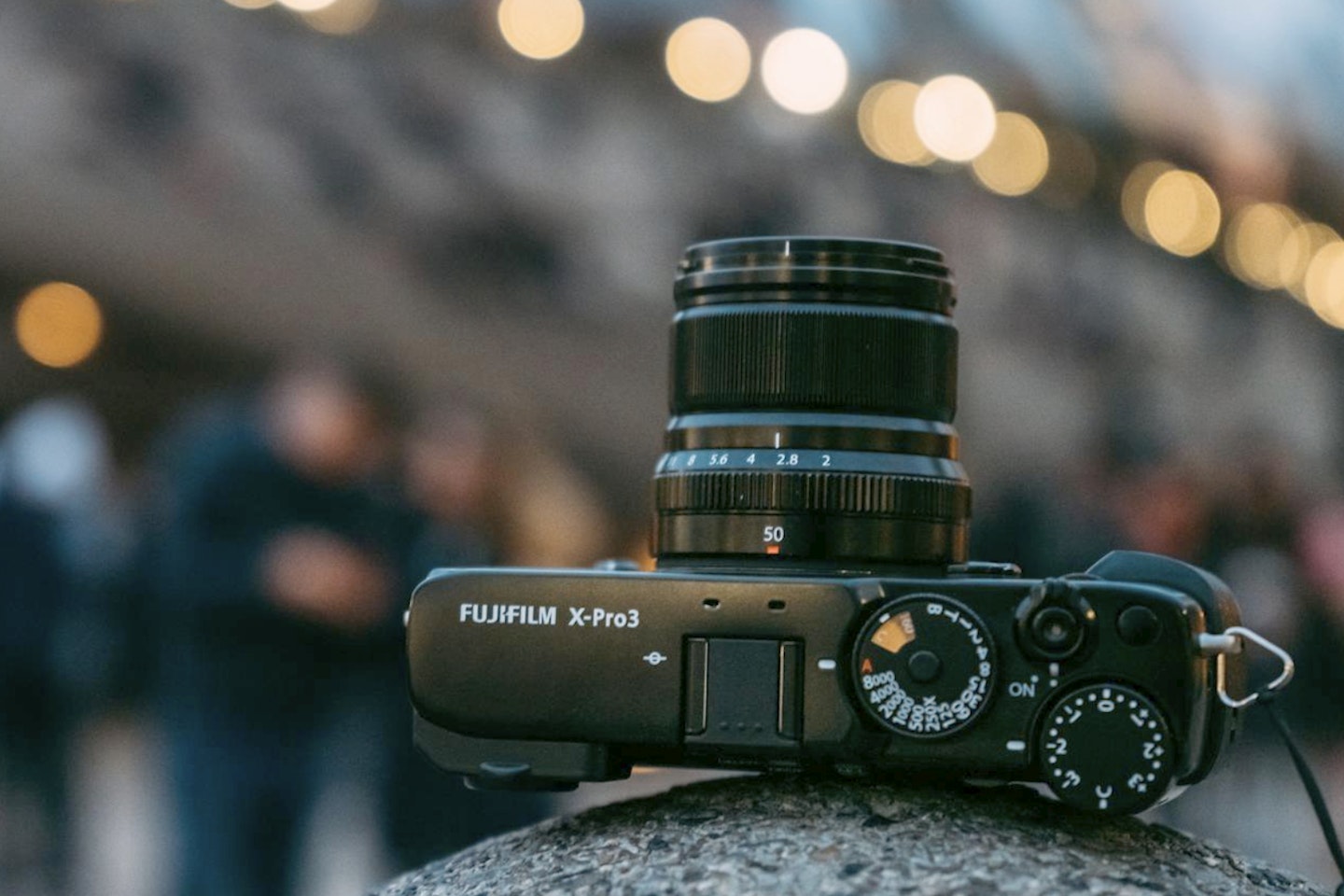
The build quality is as solid as ever, with a full metal construction backed up by titanium top and bottom plates. The usual array of controls can be found on the top, with the shutter speed dial doubling up as iso selection, while the front houses the focus mode selection switch and a lever to toggle between the electronic and optical viewfinder.
The rear is where it gets a bit more interesting... instead of a prominent back screen, there’s a 1.28-inch colour sub-monitor that shows either settings or the current Film Simulation. Tug at the back panel though, and it reveals the 3in 1620k-dot touchscreen, which can be pulled down for waist-level shooting, or further to 180-degrees.
Performance

The image quality is excellent. The APS-C chip made its debut in the XT-3, and later featured in the X-T30 – both of which are fan favourites. The tones conform to Fujifilm’s colour science and capture stunning details. Low-light performance is as strong as it has ever been, and the increase at the base end to ISO 160 gives it more flexibility over the X-Pro2, which started at ISO 200.
The hybrid AF system features 425 points of phase detection – another loan from the X-T3 – and offers improved facial and eye recognition that hits the high notes set by the industry leaders. The X-Pro3 manages to perform even better than its predecessors in darker situations, rated to focus down to -6EV. in test, the AF remained impressively unphased in low light.
Classic, crisp and capable
In contrast to the retro charm of Fujifilm, the company strives for innovation in every release, as well as with its regular free firmware updates. This means that the rangefinder-style X-Pro3 is state-of-the-art. Capturing images in low light at higher ISOs will yield impressive results, even on a par with many full-frame cameras. The X-Pro3 also allows you to focus in as little as -6EV with certain lenses, such as the 56mm f/1.2 used for this shot. The focus acquired itself rapidly, and the result is a sharp shot, even though it was lit entirely by street lighting. It was captured with the Acros Film Simulation and tweaked a touch in Photoshop using Curves for this noirish high-contrast result.
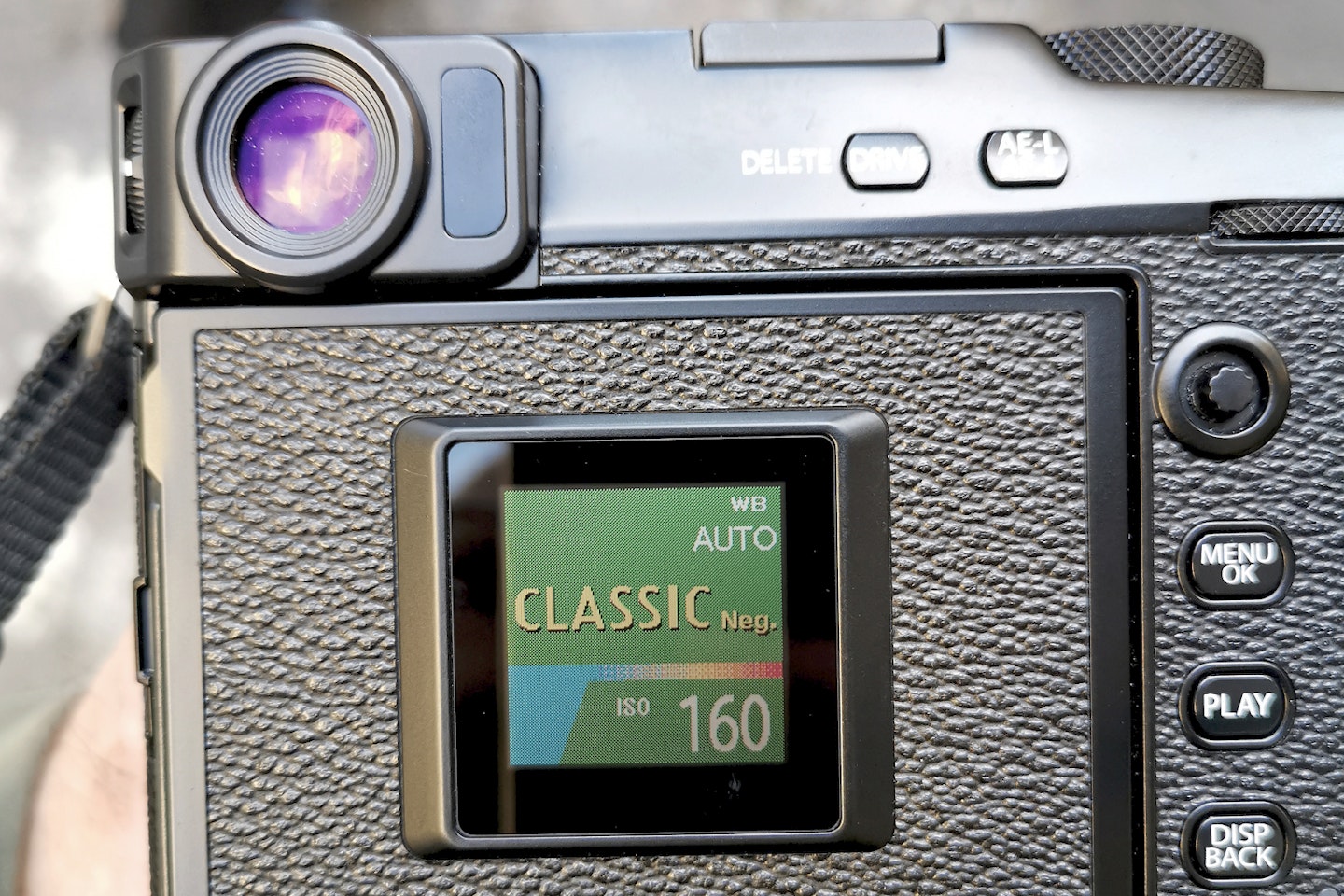
In terms of new features, the most obvious is the Classic Neg Film Simulation. This latest addition is modelled on the Superia film stock and gives a harder tonal range with less saturation. It brings the Film Simulation tally up to 17 and results in an appealing retro snapshot look. You’ll also find monochromatic colour, which adds colour tints to black & white shots, and an improved HDR mode to capture a series of shots before stitching them together for higher dynamic range in a natural way.
Although we can’t see ourselves using this often, it’s still a nice feature to have, as are the bracketing modes, which have been improved. There are options to bracket exposure, Film Simulations and even focus. the latter will automatically figure out the number of shots needed for your setup and rattle them off. We found it did a good job, snapping 70 shots for our scene. Of course, this isn’t processed in-camera, so you’ll have to jump into Photoshop or similar software to finish the job.
Film Simulations
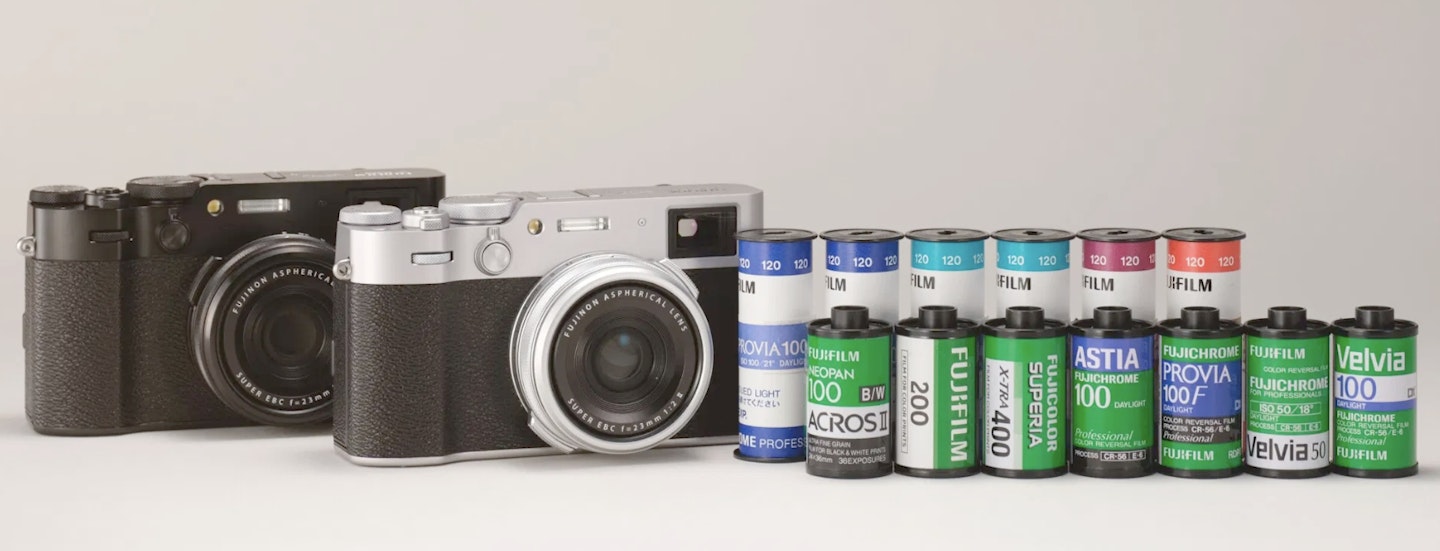
What are Fujifilm’s Film Simulation modes? Simply put, they’re Fujifilm’s answer to picture styles such as vivid, landscape or standard, which can be applied to JPEGs for a range of colour styles straight out of camera. However, unlike the versions found in the settings of other cameras, these are based on real-world film effects from Fujifilm’s archives.
Many are obviously identifiable and named to match the film they purport to mimic, such as the black and white Acros and everyday 35mm Provia. Others are more general, like Classic Chrome, which seeks to cover the style of early films rather than any specific one. They’re creative features that can be used to bring classic film styles to digital images.
Tale of tried and trusted tones

When we hear someone talk about Fujifilm, the first thing that springs to mind is the renowned colour science. The mainstay of this fame is the series of Film Simulation modes – 17 JPEG presets that apply historic film looks from Fujifilm’s back catalogue. Perfect for a simplified workflow, but also makes the X-Pro3 and other Fujifilm cameras excellent travel cameras for trips away.
When shooting in RAW, this data is stripped out, so you’re presented with the back-end processing and sensor design for a truer image. This is where the latest X-Trans 4 chip shines. The RAW files offer a lot of flexibility in the editing process and give an honest colour reproduction. The transition of shadows and tones is visibly soft, capturing all the detail in-between, which makes it a stunning camera for capturing dynamic lighting.
Weather resistance, LCD and EVF/OVF
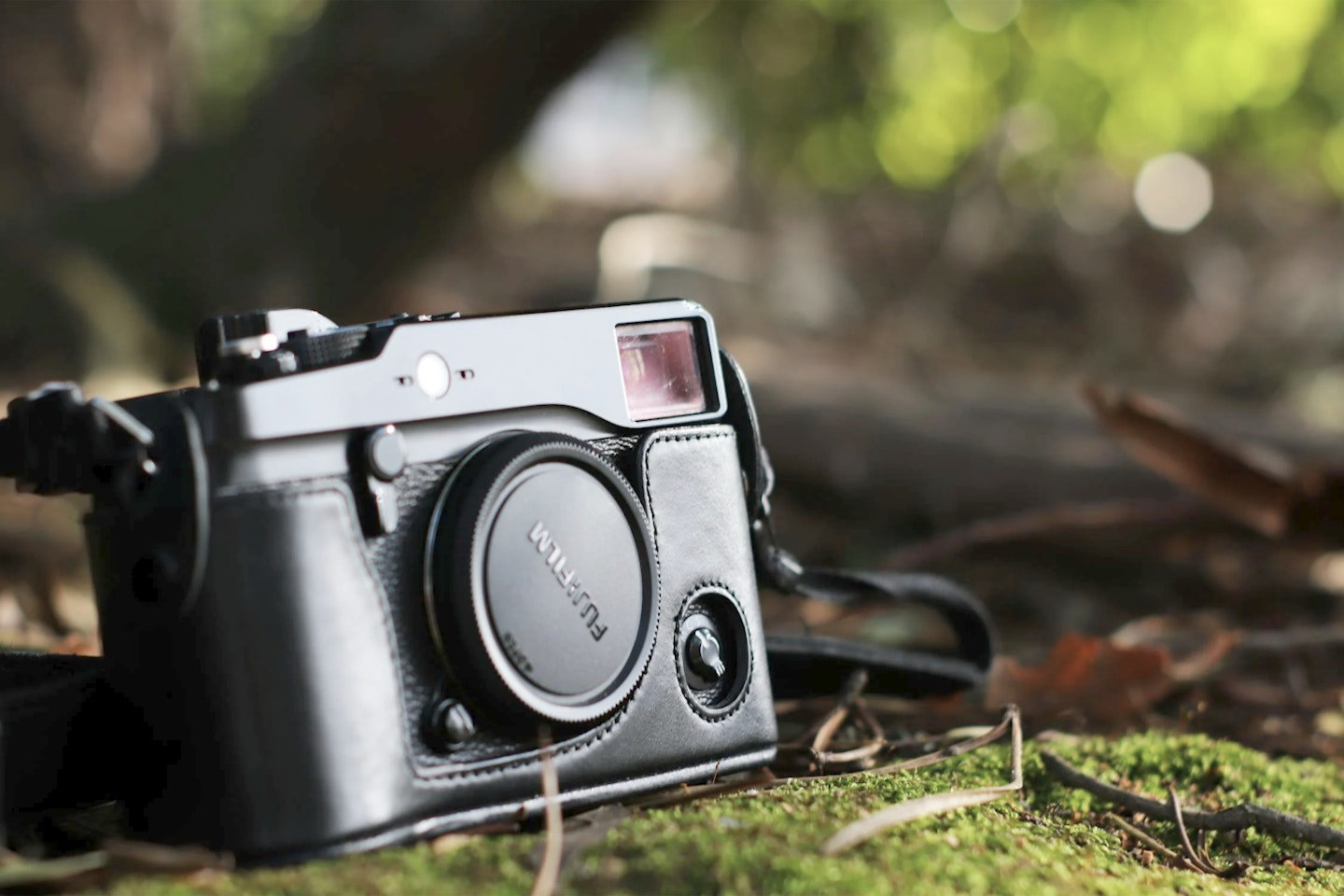
One area that will appeal to professional users is the weather sealing. When paired with a weather-resistant lens – usually marked as WR – you’ll be able to keep shooting in all conditions. Its sturdy credentials are further bolstered by the titanium top and bottom plates and, for a premium, there are two alternative versions, one black and one silver, which feature a Duratect coating. This is a tough-wearing paint, which is scratch-resistant and aims to appeal to heavy users who want to keep their camera looking fresh for the years to come. We haven’t been able to put this to the test yet, though the demonstration looked very convincing. It does add another £180 to the cost though, so it could be considered a luxury for those who feel they would benefit from having it.
The hybrid viewfinder – a staple of the X-Pro series – is a unique gem. Users can switch between a full EVF, or the rangefinder offset OVF, which has a graphical overlay. this is a novel way of shooting and comes with its own benefits. There’s a small LCD panel in the bottom right corner, which can be used for either exposure or focus confirmation. an overlay shows the framing of the lens, but since it’s not through-the- lens, it doesn’t reflect focal length. the overlay changes to show the frame’s width, which you’ll find useful if you’re looking to capture action. It may not appeal to ardent mirrorless users, though it’s something we recommend everyone try at least once.
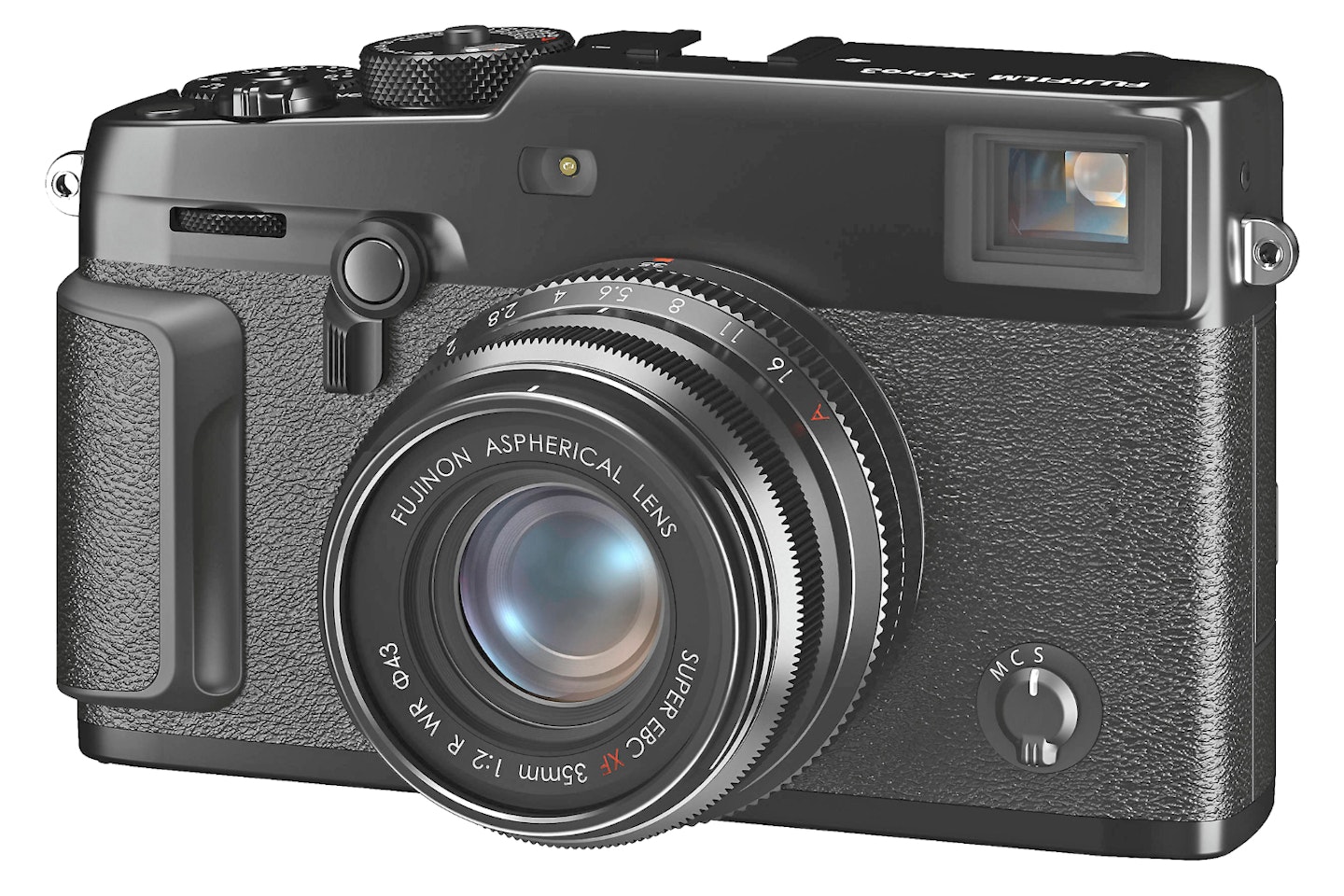
The LCD screen is hidden away as standard, and Fujifilm claims it made this choice after listening to feedback from X-Pro2 users, with the majority saying they prefer to use the viewfinder over the rear screen. This led to the new design, which sees the rear screen facing inwards by default, and the placement of a 1.28-inch sub-monitor on the rear of the camera. This can toggle between the current settings, as per the X-H1 or GFX, or display a chosen Film simulation. It may not be the most necessary addition, but it is handy to have a visual representation, and the Film simulation is charmingly displayed as if it has been ripped from an old film box, in the style of traditional film cameras.
When you do flip out the LCD screen, you’re met with a three-inch 1620k-dot touchscreen that can be angled anywhere down to 180-degree, but strangely, we found that we weren’t tempted to reposition it.
The EVF/OVF hybrid viewfinder does a great job. You can frame, shoot and navigate the menu, and even review your shots if you need to. As a challenge, we stuck to using the viewfinder and soon found ourselves enjoying the more traditional way of life, barely missing the screen at all. Of course, this isn’t as risky a move as you might imagine. The X-Pro is very much a niche range, and Fujifilm has a series of highly capable cameras with the traditional screens, should that be more suited to your taste or shooting style. For us, it all came down to enjoying the experience, and slowing down our shooting style – something Fujifilm promotes rather well.
Verdict
The X-Pro3 provides an enjoyable shooting experience. it has bags of visual appeal, and the AF, ISO and image quality are all spot on. So, the question is, do you buy into its ideology? You can still review your shots via the electronic viewfinder, and you still have a screen, albeit hidden just a quick tug away. This means it’s still a viable option, if not all that convenient. Its bold approach means this camera won’t immediately appeal to everyone, but in those cases, Fujifilm has many more hugely capable cameras available.
Similar items to consider
2.
Ricoh GR III
Fancy going low-key? The Ricoh GR III is worth a look. We reviewed it and was really impressed by its ease of use, snap focus modes and image quality.
Read the review.
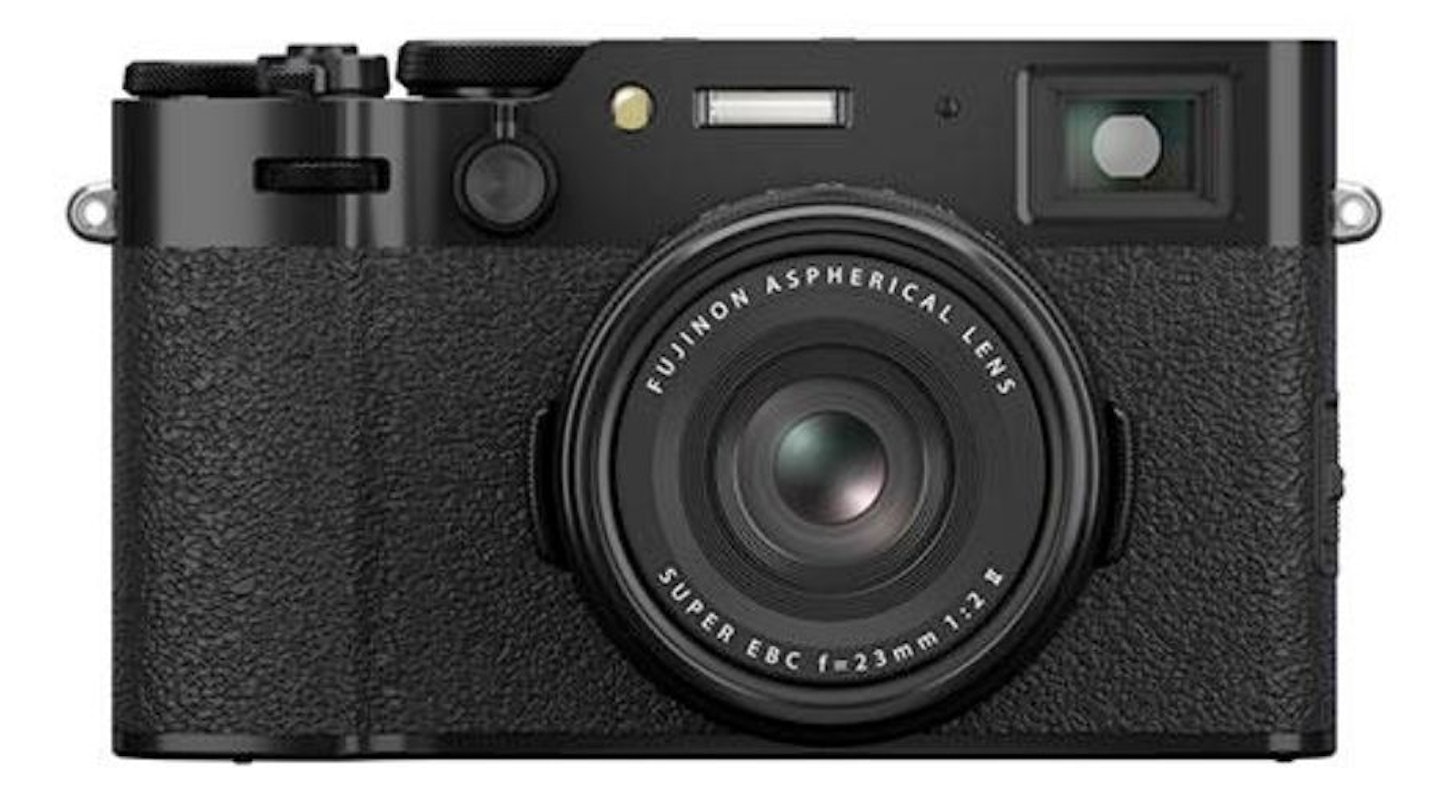 Fujifilm
FujifilmWith 20 Film Simulations and a 40.2MP resolution, the beloved point-and-shoot X100 format a triumphant return. Also featuring X-Processor 5, in-body stabilisation and a fixed 35mm f/2 equivalent lens.
If wilfully quirky and self-consciously old-school design choices aren’t for you, consider the Sony α6400. It’s a powerful and compact mirrorless with superb image quality and some of the best AF money can buy.
Who tested it?
The Fujifilm X-Pro3 was tested for the magazine Practical Photography by Kirk Schwarz. With a passion for capturing moments and exploring the intersection of technology and creativity, Kirk is a seasoned writer boasting over a decade of expertise in photography and laptops. With a keen eye for detail and a profound understanding of the evolving tech landscape, Kirk has become a trusted authority in the field.
Why should you trust us?
At What's The Best, our mission is to provide accurate and reliable reviews, ensuring our readers receive honest and transparent information about the best technology products available. Anything less would undermine our commitment to being a trusted source of unbiased product information.
Our dedicated in-house writing team comprises experts with extensive experience and a genuine passion for technology. Collectively, we have spent decades testing and writing about tech, leveraging our expertise in all our articles, advice pieces and reviews.
We maintain complete editorial independence and do not accept payment for product reviews. Our writers have full control over their content, ensuring that products are selected based solely on the needs of our readers. While we may earn commissions or other compensation from links on our website, this never affects our product choices. These links enable us to continue offering valuable consumer advice, without compromising the integrity of our reviews.
How we test products at What's The Best
Real people, real reviews and trusted buying advice.
Tired of confusing tech reviews? At What's The Best, we cut through the jargon with down-to-earth product evaluations. Our team of experienced reviewers puts everyday gadgets to the test, using them just like you would. We don't waste time on unrealistic scenarios; instead, we focus on real-world performance that matters to consumers.
This means unbiased buying advice you can trust. We only review products that are significant and relevant, so you can be sure you're getting the latest insights. Haven't seen a review for what you're looking for? Don't worry, we're constantly adding new products to our growing catalogue.
For in-depth details on our testing process, visit our dedicated tech and electronics how we test page.
Kirk Schwarz is a tech-addicted photographer with more than a decade's experience. Kirk is very used to putting new gear through extreme field-testing.


